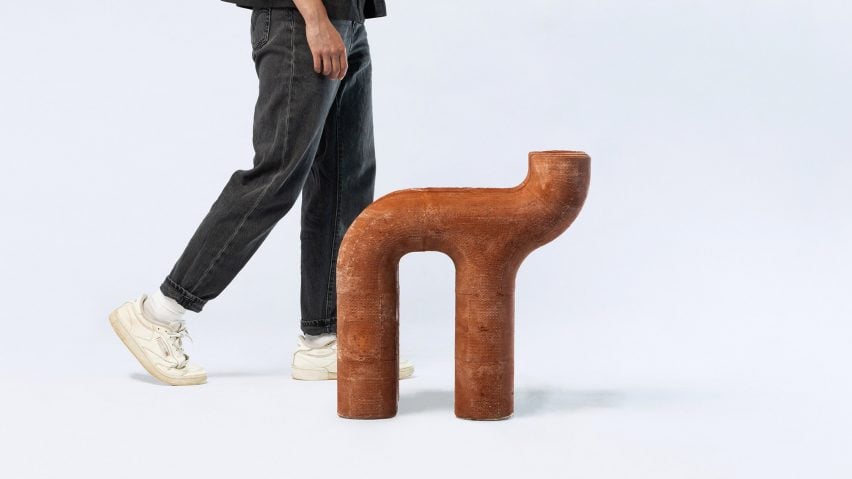
Biocement chair and wax urn among top graduate projects at Designblok
An urn made from soy wax, jewellery used to eat food and a sculptural chair made from bacteria and recycled bricks were among 15 product designs shown at Designblok's Diploma Selection exhibition.
The exhibition displayed projects from the Diploma Selection competition, which aims to recognise the best design talent from European universities.
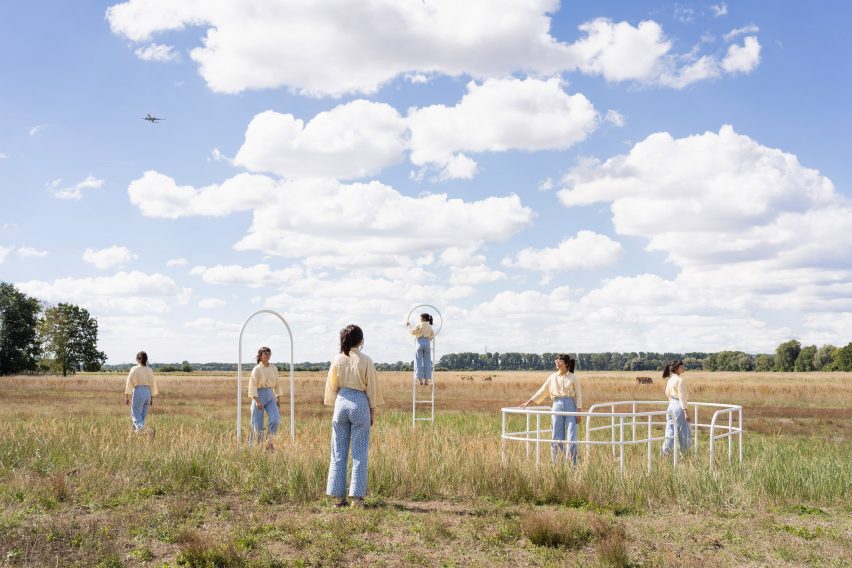
Dutch designer Esmée Willemsen won first prize for her project Agency for Unseen Sights, a series of metal structures designed to guide people to view particular sights.
With forms that bring to mind playgrounds and street furniture, the pieces aim to turn any space into an attraction.
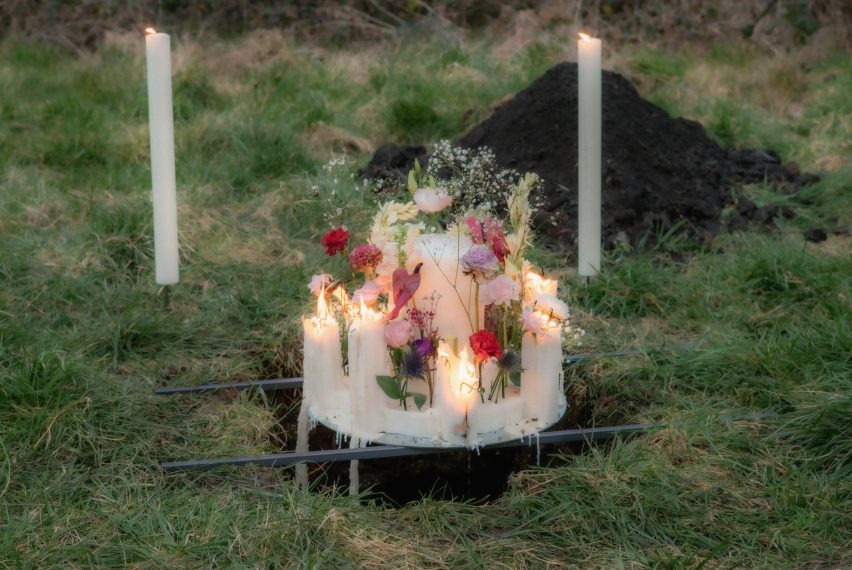
German designer Janek Beau came in second place for his soy wax urn titled Designed to Die, which was designed to be a ceremonial part of a funeral service. It comprises two parts, with the inner part holding the ashes of a deceased person.
Decorated with flowers, the intention behind the design is to place it over a grave so the wax of the outer part melts, making the part holding the ashes drop into the ground.
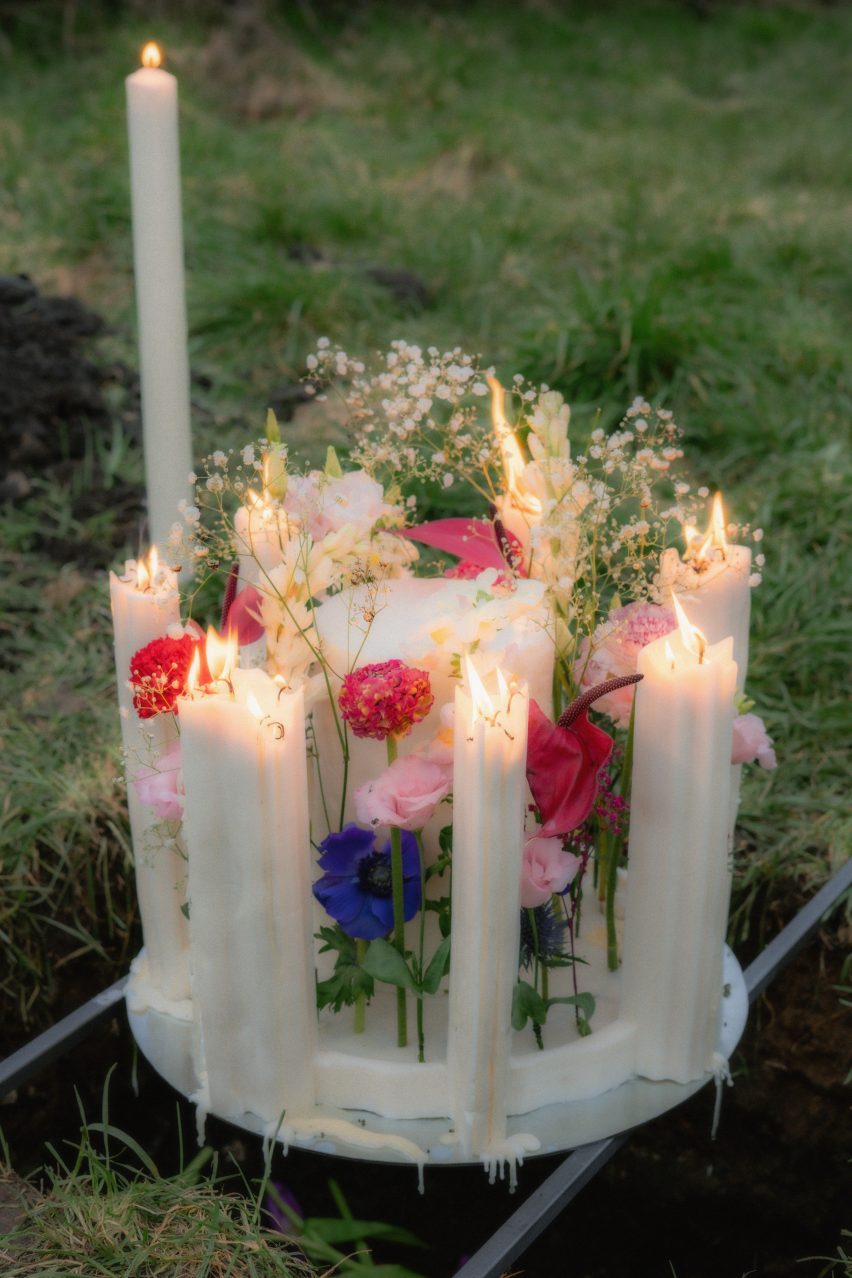
"I wanted to design an urn that would be more enjoyable for the bereaved and more joyful for the deceased person," Beau told Dezeen.
"I designed the dropping of the urn because I wanted the urn to be able to end the ritual of the funeral itself, giving a final sign of life before saying goodbye."
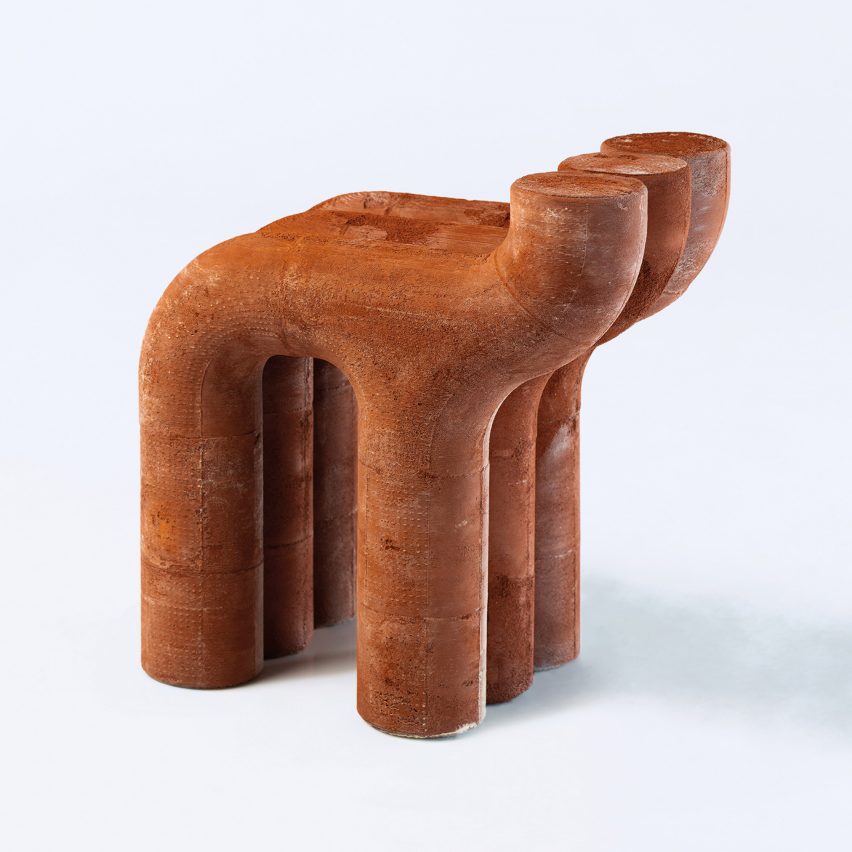
Design duo Julia Huhnholz and Friedrich Gerlach created a chair made from biomaterials titled The Essence of Biocement, which won third prize in the Diploma Selection competition and has also been longlisted in this year's Dezeen Awards material innovation category.
The biocement material was created using bacteria to bind recycled bricks with calcium carbonate. The material was then set in a 3D-printed mould to form three tubular elements, which were combined into a sculptural seat without the need for firing.
Other finalist projects included German designer Lilli Malou Weinhold's collection of silver jewellery titled Dig In, which includes rings with tongs and shell dishes designed to eat food with.
"I've noticed cutlery's declining importance among young people today, unlike my grandparents who had silverware for special occasions that they received for their wedding," Weinhold told Dezeen.
"I've wondered how cutlery can evolve to match our changing dining habits and empower users to choose how and with what tools they want to eat."
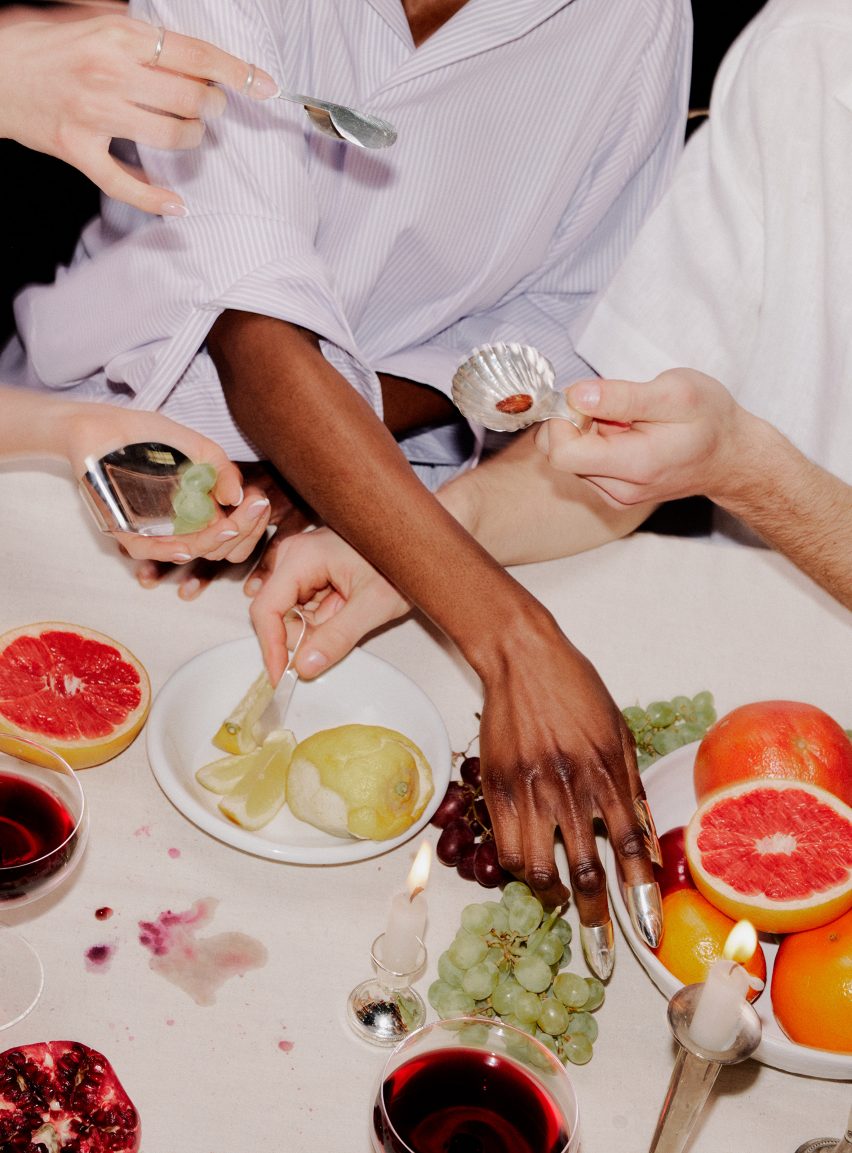
Also presenting a dining-related project was Belgian designer Arnaud Tantet, whose project Brio included a plastic knife and vase designed to be eaten and decomposed by insects.
Utilising reused materials, Czech designer Matěj Neubert showcased a collapsible snow glider named Skidder made from old ski parts, while Erika Remencová displayed a series of uniquely shaped eyewear made from surplus retail materials.
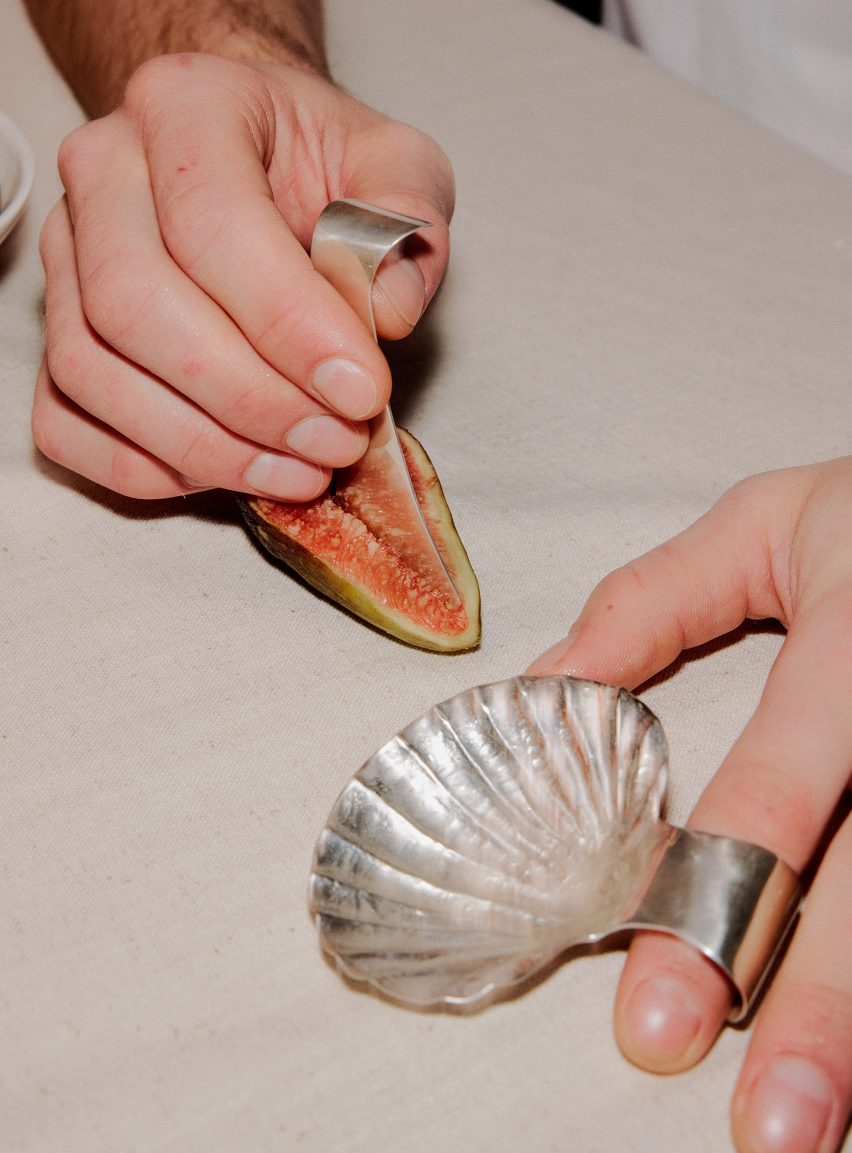
Furniture in the showcase included a wooden stool and bench by Cristina Rodríguez Solé and irregularly shaped furniture by Zuzanna Spaltabaka crafted with traditional artisan techniques.
Among the other finalist projects were porcelain containers by Lea Mader, a textile wall sculpture by Adam Pisca, woven lighting by Anastasia Mazur, a container that sorts cooking oils by Petra Rudolfová and textile objects that mimic woven baskets by Františka Benčaťová.
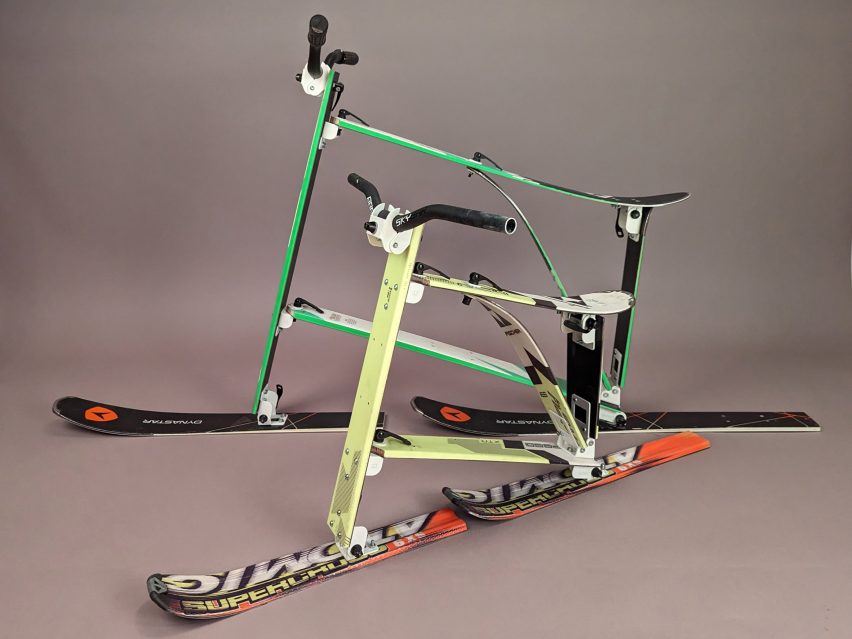
Czech designer Anna Jožová exhibited a porcelain and glass sculpture informed by the sedimentation of shells, which was also displayed as part of Designblok's Made by Fire exhibition.
Elsewhere at the Prague design festival, a trio of Czech designers presented their modular home project, Cake Houses, which aims to provide an affordable way to design bespoke houses.
The Diploma Selection was on show at Designblok from 4 to 8 October at the Museum of Decorative Arts in Prague. See our London Design Festival 2023 guide on Dezeen Events Guide for information about the many other exhibitions, installations and talks taking place throughout the week.